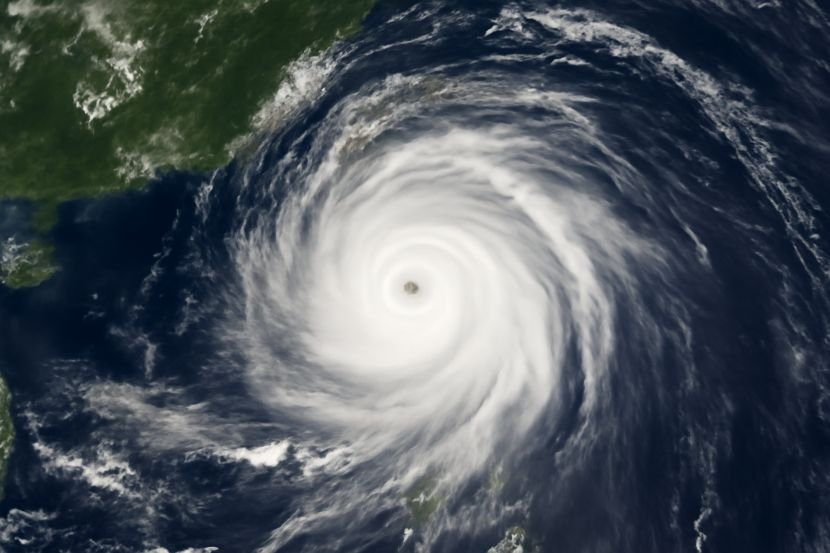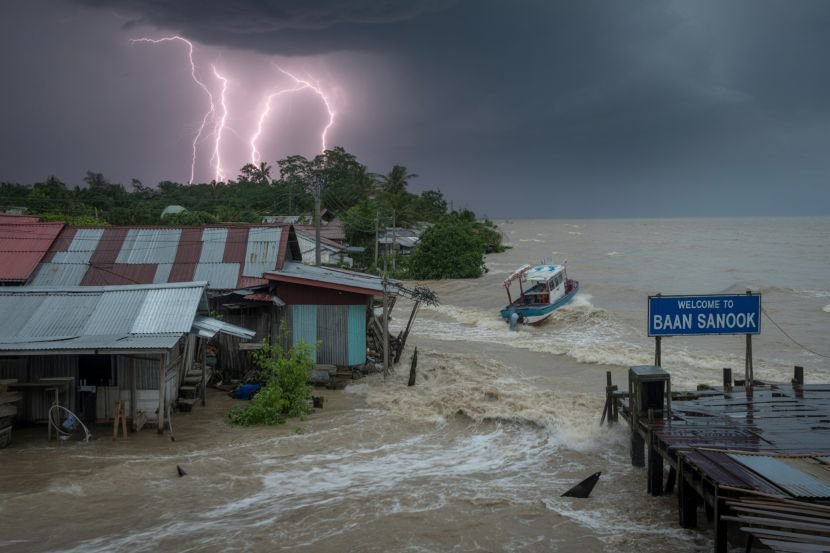Published on
September 22, 2025

Hong Kong International Airport (HKIA) is considering a 36-hour closure as Super Typhoon Ragasa nears the Asian financial hub, threatening to disrupt travel on an unprecedented scale. Aviation and airport authorities are planning to halt all passenger flights starting at 6 p.m. local time on September 23, 2025, until 6 a.m. on September 25, in an effort to ensure the safety of travelers and staff during one of the strongest typhoons to hit the region in recent years.
This would mark the longest airport closure in recent history, underscoring the severity of the storm, which has already intensified into a super typhoon with sustained winds reaching speeds of up to 230 km/h, equivalent to a Category 4 hurricane. The Hong Kong Observatory is preparing to issue its first precautionary signal for the storm by noon on September 22, as the city braces for the typhoon’s direct impact.
Super Typhoon Ragasa: A Major Threat to Hong Kong’s Infrastructure
Super Typhoon Ragasa, a storm that has rapidly gained strength, is currently located 1,100 km southeast of Hong Kongin the Luzon Strait. The typhoon’s current trajectory indicates that it is likely to make landfall in Guangdong provincearound September 24, after it grazes Hong Kong. Ragasa, a Filipino word meaning rapid motion, is predicted to cause substantial damage as it moves closer to the region.
Hong Kong, with a population of around 7.5 million, is a bustling metropolitan area heavily dependent on its airport, which handles about 1,100 flights and 190,000 passengers daily. The city’s airport shutdown reflects the escalating risk posed by Ragasa, which has already shown signs of intensifying. Officials are taking precautionary measures to avoid a repeat of the chaotic events of October 2023, when Typhoon Koinu stranded over 10,000 travelers overnight due to unpreparedness.
Aviation and Travel Disruptions
With Hong Kong International Airport potentially grounded for 36 hours, both local and international flights are expected to face disruptions. Cathay Pacific Airways, one of the dominant carriers at the airport, accounting for 45 percent of the flights in and out of Hong Kong, is preparing for significant operational impacts. The airline has already announced that it will waive ticket change fees to allow passengers to rearrange their trips more easily during the typhoon period.
Additionally, other local airlines have followed suit by removing penalties for changes to travel plans between September 23 and September 25, offering more flexibility to travelers. However, long-haul flights are likely to be rescheduled, with short-haul services possibly facing delays as well. These changes aim to mitigate the fallout from the storm and provide as much certainty as possible for travelers.
Airport authorities are also focusing on minimizing damage to aircraft and infrastructure. Planes not in use will be relocated to safer locations to avoid damage from flying debris and harsh winds. Limited cargo flights may resume by September 24, but no final decision has been made about when the full resumption of commercial flights will occur.
The Impact of Flooding and Waste Management Challenges
The severe flooding caused by the typhoon is expected to lead to road closures, flight delays, and disruptions to essential services across the city. The impact of heavy rainfall and strong winds is likely to exacerbate infrastructure damage, leading to delays in the reopening of the airport and the resumption of flights.
Beyond the airport closure, local officials have expressed concern about the wider impact of the storm on Bali, Philippines, and other parts of Southeast Asia. The Philippines has already suspended work and school classes in Manila and nearly 30 provinces, as Ragasa continues its rapid approach toward the Philippine Islands and beyond. The storm’s progress is being closely monitored by the World Meteorological Organization (WMO), which is keeping track of the storm’s path and advising local governments on safety measures.
Preparations and Safety Measures for Local Communities
Hong Kong’s authorities have been preparing for Ragasa’s arrival by issuing alerts and establishing contingency plans for residents. As of September 22, many residents in affected areas have been advised to remain indoors and take precautions to protect themselves from high winds and flooding. Those in low-lying areas and near waterways are especially vulnerable to flash flooding.
In addition to warnings about flooding, residents have been asked to secure any outdoor items and ensure that homes are ready to withstand the storm. Local authorities are also focusing on providing immediate relief to affected communities through emergency services, temporary shelters, and resource distribution.
The Role of Aviation Authorities and Emergency Services
Both aviation authorities and emergency services are working collaboratively to ensure that the storm’s impact is managed as efficiently as possible. The Airport Authority Hong Kong and the Civil Aviation Department are coordinating efforts to implement the 36-hour flight suspension and ensure that the most critical flights are either rescheduled or redirected.
At the same time, Hong Kong’s emergency services are on high alert to respond to any natural disasters that occur, including flooding and landslides. The Hong Kong government has also mobilized additional resources to address the storm’s effects on local infrastructure and communities, particularly as Ragasa makes its way toward Guangdong.
Conclusion: Preparing for Uncertain Conditions
The expected 36-hour closure of Hong Kong International Airport serves as a testament to the growing risks posed by natural disasters such as super typhoons. With a super typhoon like Ragasa on course to impact Hong Kong, travelersare advised to stay updated on flight statuses and follow official safety guidelines from local authorities. The aviation industry is doing everything possible to minimize disruption, but the safety of passengers and staff remains the top priority. As Hong Kong braces for the worst of Ragasa, travelers are urged to remain flexible, prepared, and patient, as the situation continues to unfold in the coming days.









